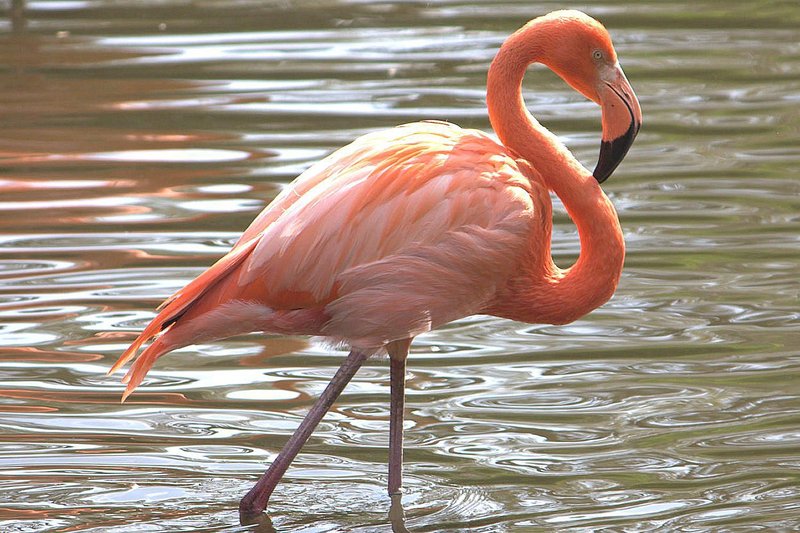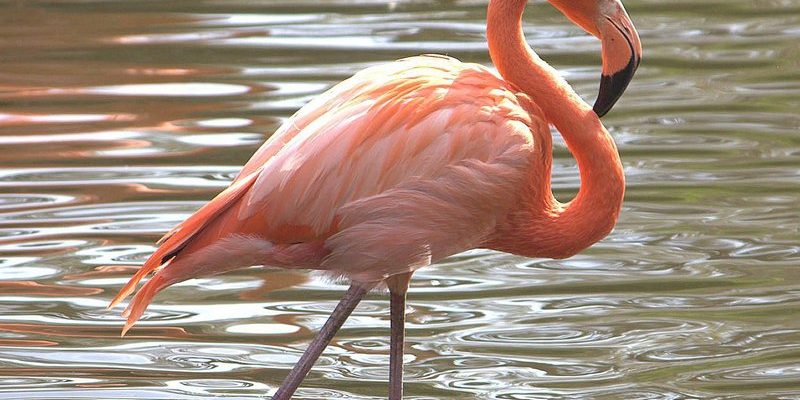
Flamingos are not just beautiful birds; they also have some pretty interesting ways of starting their families. They build nests, lay eggs, and raise their young in ways that are uniquely adapted to their environment. Understanding these habits gives you a peek into their world, and it’s truly something special. So grab a cup of coffee, and let’s dive into the colorful life of flamingos!
Understanding Flamingo Nesting Habits
Flamingos are known for their unique nesting behaviors, which set them apart in the avian world. Most flamingos prefer to nest in large colonies, sometimes numbering in the thousands. This communal lifestyle is one of their survival strategies. Think of it as living in a bustling neighborhood where everyone looks out for each other. The more flamingos that gather, the more protection they offer against predators.
Their nests are simple yet fascinating structures. Typically, they create mounds made from mud, plant material, and even their own feathers. These mounds are often around 12 inches high, which helps keep the eggs safe from flooding. Honestly, it’s like building a small fortress for their future chicks! The shape and elevation of these nests also help regulate temperature—keeping those precious eggs cozy.
During the nesting season, which varies depending on the species and location, flamingos engage in elaborate courtship rituals. You might see them dancing, head-flagging, or even preening one another. These behaviors not only strengthen pair bonds but also ensure that the mating process is successful. It’s all part of a beautiful song and dance that’s crucial for their reproductive success.
The Nesting Process
Once the courtship is over, it’s time for the female flamingo to lay her eggs. Typically, she will lay one egg per nesting season, though sometimes two can occur. This isn’t like a chicken farm; flamingo eggs are quite special. The eggs are usually a pale blue or greenish hue, making them blend in with the surrounding environment. This camouflage helps protect them from potential threats.
After laying the egg, both parents take an active role in incubation. They trade off sitting on the nest to keep the egg warm, which can take about 28 to 32 days. Here’s the thing: this teamwork is crucial. It helps ensure that the egg stays at a constant temperature and receives the care it needs to develop. It’s a great example of parental cooperation that many species could learn from!
Once the chick hatches, the parents continue caring for it. They feed the young flamingo a special secretion known as “crop milk,” which is made from the parents’ digestive system. Picture it like a nutritious smoothie that’s packed with everything the chick needs to grow strong! The chick will be gray or white at birth, which is a stark contrast to the vibrant pink of the adult flamingos. It can take years of special diet and care before the young flamingo develops its signature color.
The Lifecycle of Flamingos
Flamingos generally have a long lifespan, often living up to 30-50 years in the wild. They start breeding at around 3-6 years old, but they might not breed every year. Some flamingos take their time to choose a suitable mate and may skip breeding seasons. This approach allows them to invest more energy into raising a healthy chick when the time is right. In a way, it’s like waiting for the perfect moment to start a project that truly matters.
As the chicks grow, they stay in the colony with their parents for several months. During this time, they learn crucial skills for survival, like foraging for food and understanding social dynamics within the group. Young flamingos are quick learners and very observant, mimicking the adults as they feed on algae and small crustaceans in the water.
When it’s time for the young flamingos to leave the nest, they start joining a juvenile group where they can socialize and refine their skills. This period is essential for preparing them to eventually find their mates and establish their nests. It’s almost like a rite of passage where they learn the ropes before starting their own families.
Flamingo Habitats and Nesting Locations
Flamingos can be found in various habitats around the world, primarily in tropical and subtropical regions. They prefer shallow lakes, lagoons, and estuaries where they can wade and find their favorite food—small crustaceans and algae. These environments not only provide food but also suitable nesting spots.
The choice of nesting sites is usually influenced by water levels and the risk of predation. Flamingos tend to choose locations that are remote and less accessible to potential threats. For example, high salinity and areas with muddy substrates make for ideal nesting spots. It’s like looking for that perfect cozy nook in a crowded café. They want a place that’s safe, comfortable, and feels like home.
During the nesting period, the availability of suitable sites becomes a hot topic. As climate change and human activities impact wetland areas, flamingos face challenges in finding ideal nesting locations. Conservation efforts are important to maintain their habitats and ensure that these stunning birds can continue their beautiful life cycles.
Challenges and Threats to Flamingo Breeding
While flamingos are resilient, they aren’t without their challenges. One of the biggest threats to their nesting success is habitat loss. As wetlands are drained for agriculture or urban development, suitable nesting grounds become scarce. This loss not only impacts their nesting habits but also the availability of food and safe environments for their chicks.
Another issue is climate change. Rising temperatures and changing weather patterns can affect water levels, which are crucial for nesting. Flooding can wash away nests, while drought can leave flamingos without accessible food. It creates a challenging balancing act for these beautiful birds, making it all the more important for conservation efforts to address these issues.
Moreover, human disturbance can be a significant problem. When people encroach on flamingo habitats—whether for tourism or development—it can lead to increased stress and lower breeding success. Education and awareness are essential to help protect these habitats and ensure that flamingos can thrive for generations to come.
The Importance of Conservation for Flamingos
Conservation plays a vital role in ensuring the survival of flamingos and their unique nesting habits. Organizations around the world are actively working to protect wetlands and create breeding reserves that safeguard flamingo habitats. Efforts include restoring degraded wetlands, mitigating human impact, and conducting research to better understand flamingo behavior and needs.
By promoting sustainable practices, we can help ensure that flamingos have safe spaces to nest and rear their young. It’s a collective effort that involves communities, governments, and conservationists working hand in hand. Coming together for a cause can produce incredible results, just like a flamingo colony that unites to protect its young.
One way you can contribute to flamingo conservation is by supporting organizations that focus on wetland preservation. Just by being aware of the issues and sharing information, you can play a part in this important mission.
Flamingos are more than just striking birds; they are fascinating creatures with unique nesting habits and a captivating lifecycle. From their elaborate courtship dances to the careful nurturing of their young, these birds offer a beautiful glimpse into the wonders of nature. Understanding their nesting habits and the challenges they face can inspire us to take action in preserving their habitats.
As we sip our coffee and watch the wonders of flamingo life unfold, let’s remember our role in protecting not only these glamorous birds but also the habitats they depend on. By fostering awareness and supporting conservation efforts, we can help ensure that future generations will also get to marvel at the beauty of flamingos dancing in the sun.

